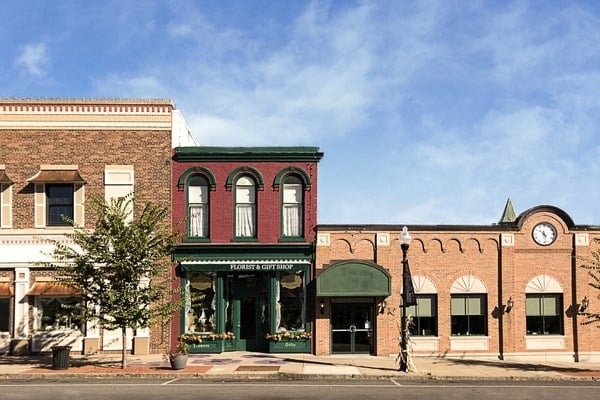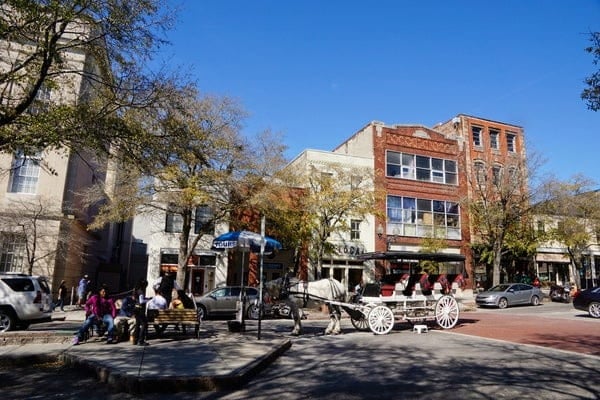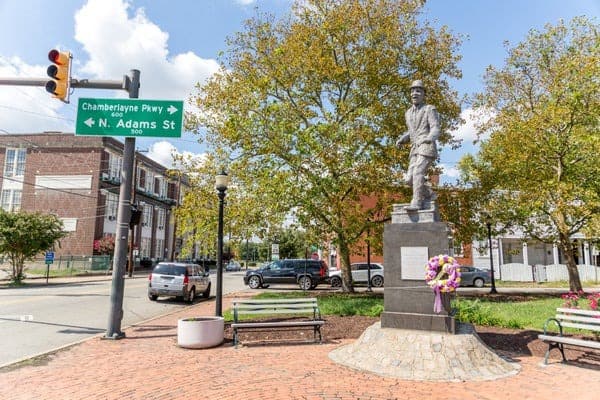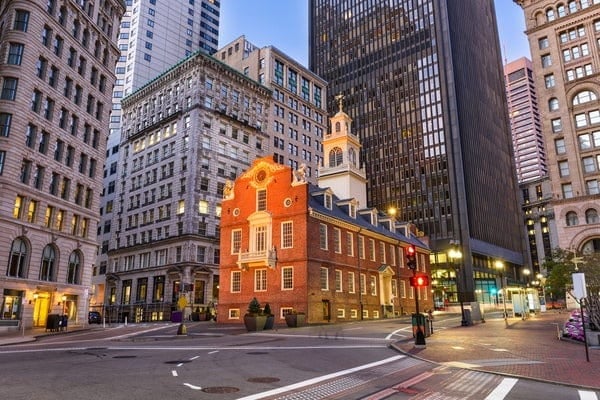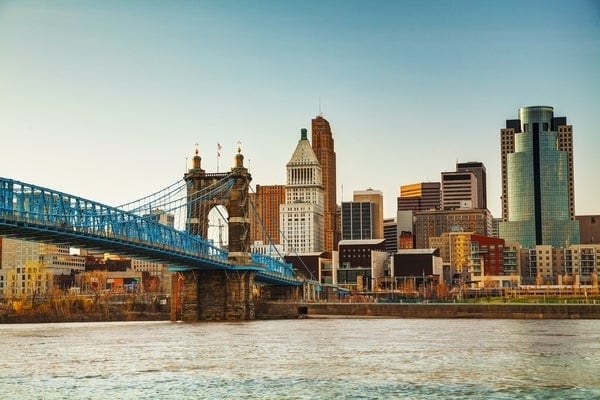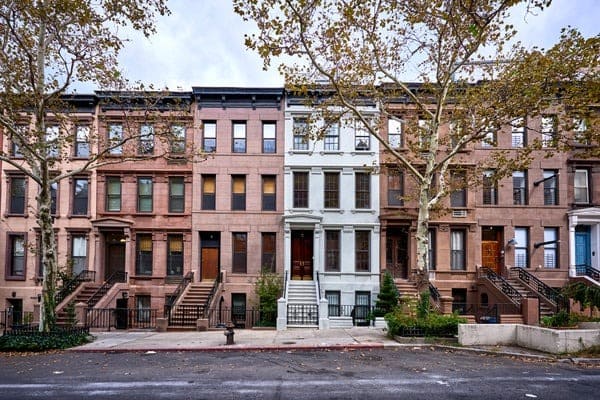From sea to shining sea, the United States is filled with historical cities with storied pasts, rich architecture, culture, and food.
In honor of the Fourth of July, we’ve put together a list of some of the best cities with historic neighborhoods in America. Visit these unforgettable places to transport yourself to the past and celebrate our nation’s history.
1. Savannah, Georgia: Historic Landmark District
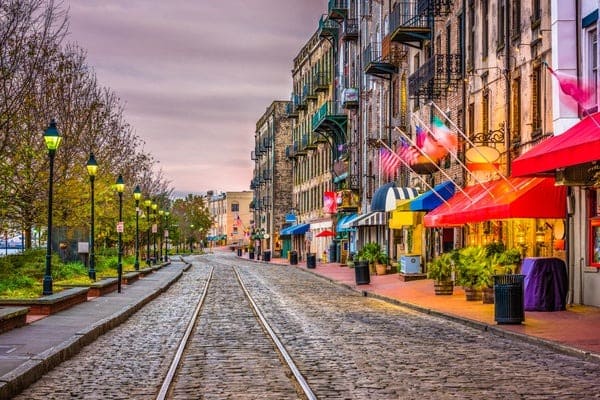
As the first planned city in the United States, Savannah Georgia is one of the best historical places to visit in the U.S. You’ll find incredible architecture throughout the city’s planned grid layout that ranges from Colonial-style to Greek and Gothic Revival. According to Savannah.com, “more than 40 percent of 2,500 buildings inventoried in Savannah have architectural or historical significance.”
When it comes to historic neighborhoods, it’s hard to beat Savannah’s Historic Landmark District, the largest National Historic Landmark District in the entire nation. This downtown neighborhood includes 22 park squares; the Telfair Museum, the oldest public art museum in the South; and the Georgia State Railroad Museum. Monuments, war forts, restored centuries-old mansions, and cobblestone streets all allow you to soak up the city’s history. Spanish moss lines this neighborhood’s homes and parks, including the 30-acre Forsyth Park, which dates back to the 1840s.
The Historic District’s famed River Street traces the Savannah River with cobblestones from around the world. Explore one of the neighborhood’s antique shops, historic hotels (Kehoe House is a visitor favorite), ghost tours, or trolley tours to satisfy your inner history buff. Mix in some modern-day dining experiences by popping into Moon River Brewing Company, Husk restaurant, or The Coffee Fox.
2. Cleveland, Ohio: Tremont
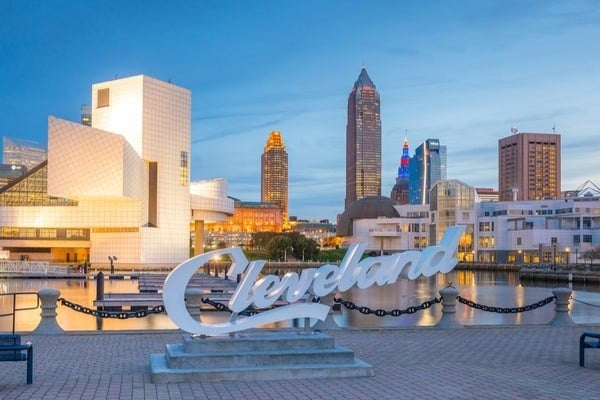
Established in 1796 as “Cleaveland,” the settlement that would become Cleveland is one of the most historic cities in the U.S. Once called the “Sixth City” because of its population and political significance at the time, Cleveland was also an important stop on the Underground Railroad. It later became swept up in the City Beautiful movement.
Cleveland’s historic neighborhoods are as varied and unique as the city itself. Tremont, a community on Cleveland’s West Side, is on the National Register of Historic Places. The neighborhood is located at the top of a bluff, which provides beautiful views of nearby Downtown Cleveland. The neighborhood’s unique elevated geography and nonconforming zigzag streets continue to intrigue visitors drawn to Tremont’s unusual charms. For an adventurous way to get around this artsy neighborhood, walk or bike along the Towpath Trail, which connects nature and urban settings.
Visiting this historic town means [almost] endless things to do, see, and taste. Start by visiting Tremont’s landmarks, including Lemko Hall, the St. Theodosius Russian Orthodox Cathedral, the historic high-rise The Chelsea Building, and the Pilgrim Congregational Church, with its famed rose windows. Then, pop into the many boutiques and art galleries, like Doubting Thomas Gallery and Kaiser Gallery. Round out your visit by getting a bite at Prosperity Social Club, a retro tavern that slings fish fries and pierogis, or The Treehouse, an Irish pub that features a cozy outdoor patio and live music.
3. Detroit, Michigan: Indian Village
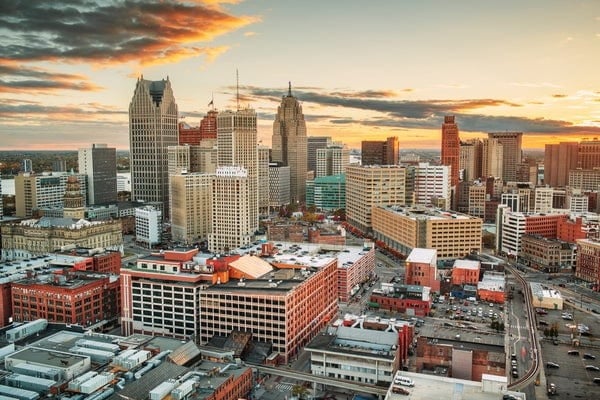
During the War of 1812, Detroit Michigan was seen as a stronghold for the United States. Although the city was surrendered to the British, it was recaptured by the U.S. a little more than a year later. As the largest manufacturer of automobiles in the United States, Detroit quickly became an economic powerhouse during the early 20th century and has since transformed into an artistic and eclectic city—making it a must-see on any list of historical cities in the U.S.
One of the most historic neighborhoods Detroit showcases is Indian Village. A residential neighborhood on the east side of Detroit, Indian Village was first developed by Frenchmen Francois Rivard and Jacque St. Aubin after they received ribbon farmland grants (narrow parcels of land that featured some Detroit River frontage). By the late 19th century, the Cook Farm Company, Ltd., was formed to ensure that the area became a first-class residential neighborhood.
Today, Indian Village is affluent due to the architecturally significant homes built here, which feature the works of famous Detroiter architects, such as Louis Kamper and Albert Kahn. They built homes for prominent Detroiters like brewmaster Bernard Stroh and the founder of Cadillac and Lincoln, Henry Leland. The mansions in Indian Village include 17 different architectural styles dating from the late 19th to the early 20th centuries.
You can see old Colonial homes and some in the styles of Georgian, Federal, and Tudor during the neighborhood’s annual home and garden tour and Holiday Home Tour, which features a tour of homes decked out in holiday décor, serving food, drinks, and sometimes live music. Don’t miss the historic gas lamps dotted throughout the neighborhood.
If you have the finances to purchase one of the beautiful houses in Indian Village, be aware that the Historic District Commission of Detroit has to approve most exterior changes to the homes—but don’t let that stop you from moving into an older home. Learn more about renovating a historic home and things to know before moving to Detroit.
4. Atlanta, Georgia: Grant Park
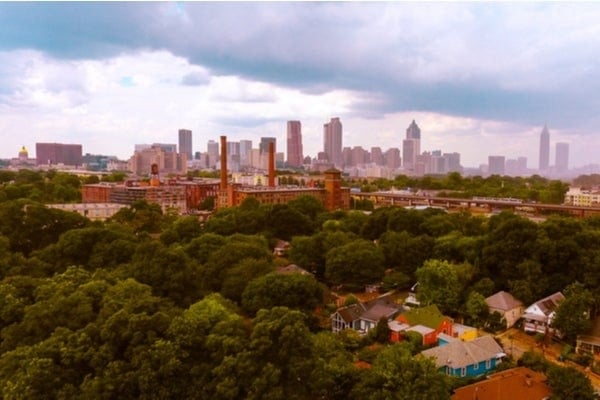
Atlanta is one of the most historical cities in the U.S. Initially called Marthasville after its then-governor’s daughter, the town’s name eventually changed to Atlanta in honor of its prominence as the end of the Western & Atlantic railroad line. After the Civil War, the city achieved its current notoriety as America’s manufacturing and airport hub. Atlanta is also known for its involvement in the Civil Rights movement and is the home of Civil Rights leader Martin Luther King Jr.
One of the most historic Atlanta neighborhoods is Grant Park, which comprises a beautiful 131-acre recreational park of the same name. Home to the famed Zoo Atlanta, founded after a failed circus caused animals to be donated to the city, Grant Park also boasts the second-oldest house in the entire city. Lemuel P. Grant’s 1858 mansion still stands today as the headquarters of the Atlanta Preservation Center, which promotes “the preservation of Atlanta’s architecturally, historically, and culturally significant buildings, neighborhoods and landscapes.” The nonprofit organization also hosts Grant Park tours that feature architecture and nature.
To encounter notable members of Atlanta’s past, book a Grant Park Past & Future Food Tour, where you’ll walk through the Oakland Cemetery—established in 1850—and enjoy bites at local Southern-style restaurants. Don’t miss a visit to the St. Paul United Methodist Church, which once housed the largest Methodist congregation in the Southeast, featuring eye-catching stained-glass windows and an organ from 1887.
After your dose of history, grab a tasty treat at Ziba’s or, if it’s Sunday, at the Grant Park Farmer’s Market.
5. Chicago, Illinois: Hyde Park
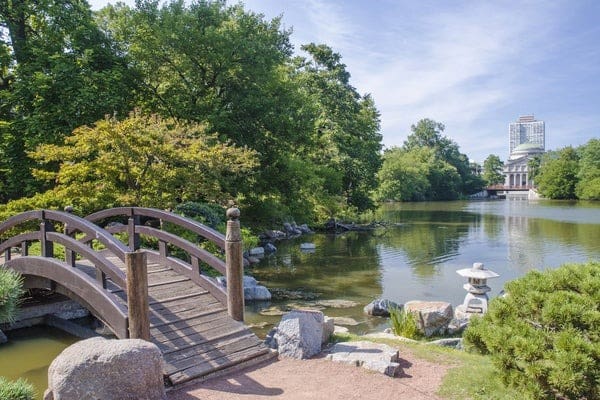
Founded in 1830, Chicago Illinois soon became the Midwest’s largest city and the nation’s leader of industry. When you’re looking for one of the most historic neighborhoods in Chicago, head to Hyde Park. The neighborhood is brimming with history and culture; it’s home to the Museum of Science and Industry, half of the city’s historic sites listed in the original 1966 National Register of Historic Places, Frank Lloyd Wright’s famous Robie House, and the upcoming Obama Presidential Center.
In 1891, the University of Chicago was established in Hyde Park. The neighborhood would go on to host the Chicago World Fair in 1893, also known as the World’s Columbian Exposition. Meant to celebrate the 400th anniversary of Christopher Columbus’s arrival to the New World in 1492, the fair boasted 14 buildings built by prominent architects of the day. It also displayed the original Ferris Wheel built by George Washington Gale Ferris Jr. Though much of the original fair’s buildings are gone, visitors can still wander through Jackson Park, which was the site of the World Fair and boasts the beautiful Garden of the Phoenix, the Midway Plaisance, and more than 600 acres of scenic green space.
Hyde Park also comprises the picnicker’s dreamy Promontory Point and historic shopping districts on 53rd Street, 55th Street, and 57th Street (check out 57th Street Books while you’re there). For a dose of contemporary culture, book tickets to a play at the award-winning Court Theatre or attend the Hyde Park Jazz Festival if you’re lucky to be in Chicago in the fall.
